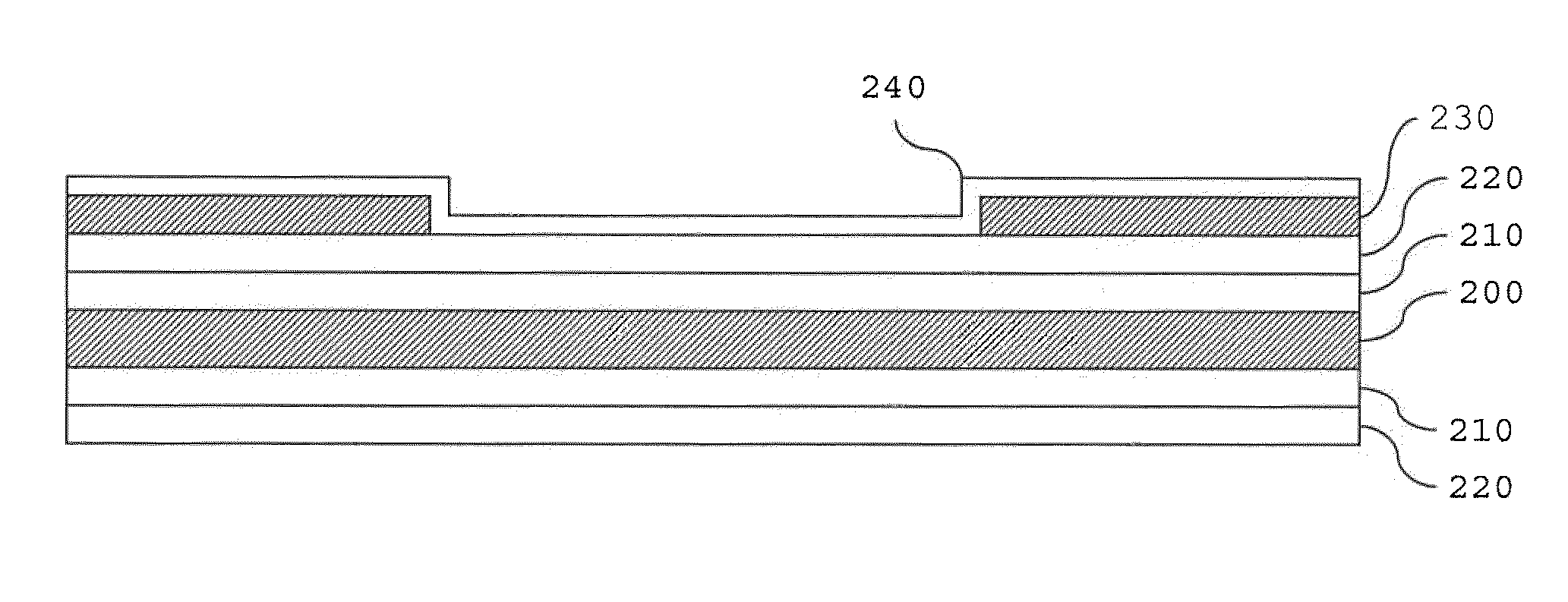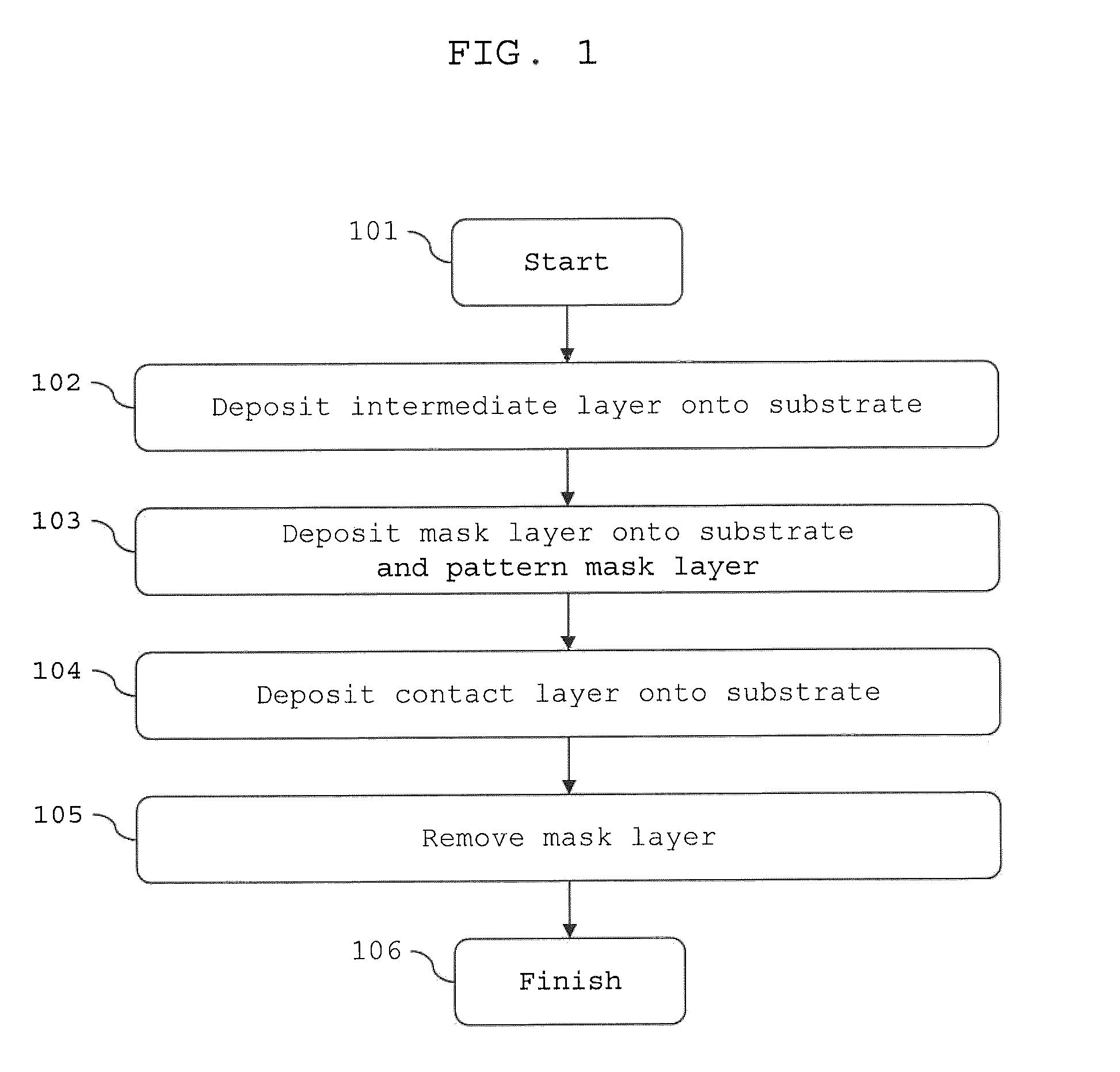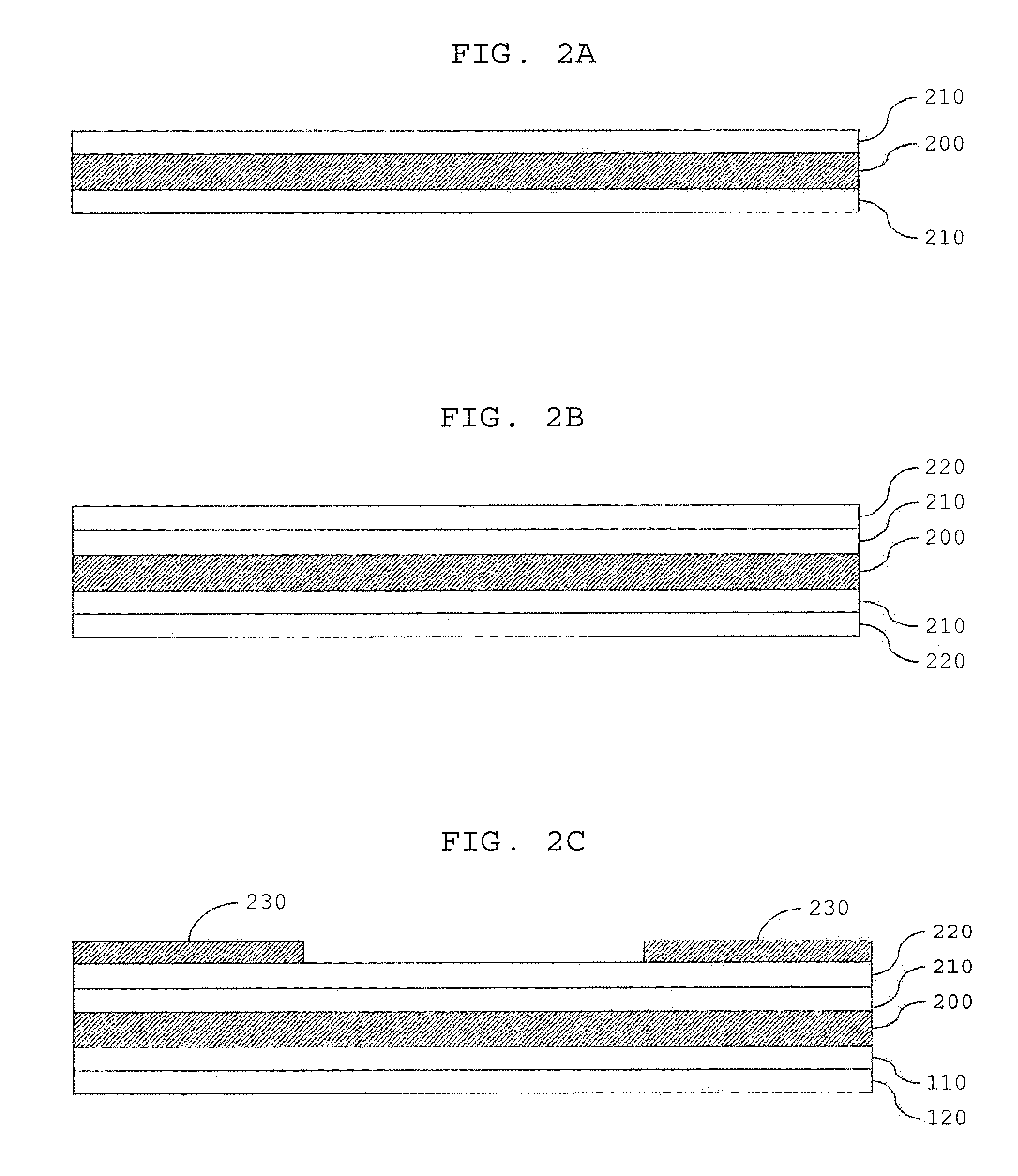Liquid barrier and method for making a liquid barrier
- Summary
- Abstract
- Description
- Claims
- Application Information
AI Technical Summary
Benefits of technology
Problems solved by technology
Method used
Image
Examples
Embodiment Construction
[0019]As noted above, one aspect of the invention is that a liquid barrier can be formed by creating a contact angle differential between surfaces in which liquid flow is desired and areas in which it is not. In other words, a boundary between areas of sufficiently different wettabilities can provide a barrier to the flow of a liquid. A highly wetting area, i.e., one with a low contact angle, is an area where liquid flow is intended or desired; a bordering area with low wettability, i.e., an area with a high contact angle, is one where liquid flow is prevented. The boundary between these areas is thus a liquid barrier because it can impede the flow of a liquid from the low contact angle area on to the high contact angle area, hence controlling and confining the liquid to stay within the low contact angle area.
[0020]The extent to which a liquid wets or spreads on a surface depends upon the interfacial energies between the liquid, the surface, and the ambient. At steady state, thermod...
PUM
| Property | Measurement | Unit |
|---|---|---|
| contact angle | aaaaa | aaaaa |
| contact angle | aaaaa | aaaaa |
| contact angle | aaaaa | aaaaa |
Abstract
Description
Claims
Application Information
 Login to View More
Login to View More - R&D
- Intellectual Property
- Life Sciences
- Materials
- Tech Scout
- Unparalleled Data Quality
- Higher Quality Content
- 60% Fewer Hallucinations
Browse by: Latest US Patents, China's latest patents, Technical Efficacy Thesaurus, Application Domain, Technology Topic, Popular Technical Reports.
© 2025 PatSnap. All rights reserved.Legal|Privacy policy|Modern Slavery Act Transparency Statement|Sitemap|About US| Contact US: help@patsnap.com



